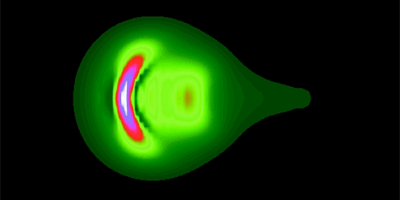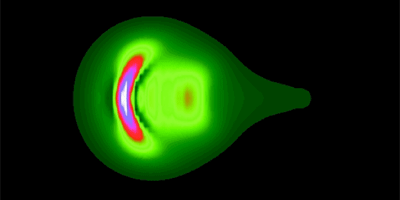Cascading Compression
Ultrashort laser pulses are like microscopic camera flashes, capable of controlling and observing chemical reactions and electron motion. A new technique for compressing high-energy pulses utilizes a combination, or cascade, of nonlinear effects inside a thin crystal. In experiments described in Physical Review Letters, the method reduces a pulse to just four periods in the time domain.
A common way to compress energetic femtosecond ( ) pulses involves two-steps: broadening the pulse spectrum in a nonlinear gas-filled fiber, then using dispersive optics to compress the pulse in time. One drawback of this method is that high-intensity pulses self-focus, which limits the allowed power input. The availability of self-defocusing nonlinear media would circumvent this problem and allow for novel compression schemes for higher-energy pulses.
Self-defocusing requires a negative index of refraction, which arises in certain two-stage transitions where the frequency of light is doubled then subsequently halved. This “cascaded nonlinearity” is most efficient under nearly phase-matched conditions, meaning the different frequencies composing the pulse propagate with almost the same phase velocity. Unfortunately under this condition the cascaded process has limited bandwidth, implying that it is inefficient for femtosecond pulses.
Binbin Zhou of the Technical University of Denmark and his colleagues decided to reverse course and let the phase mismatch be large. This typically would nearly cancel out the nonlinear effects, but the team compensated by selecting to polarize the pulses so that the largest nonlinearity is available. They tested the concept by sending a 47-femtosecond pulse into a millimeter-long crystal of lithium niobate. The output was a -femtosecond pulse with of the original energy. – Michael Schirber





